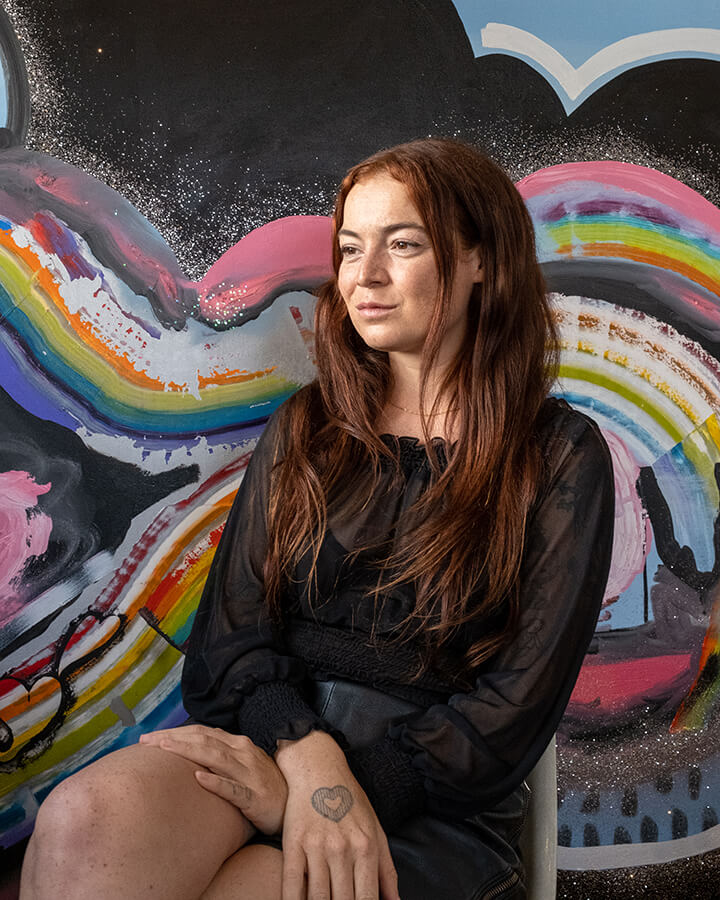Tell us a bit about yourself and what you do?
Hi! My name is Adrienne Sacks. I’m originally from Phoenix, Arizona. I went to undergrad in Massachusetts at Tufts University, and then moved to Los Angeles four years ago where I currently live and work. Right now, my time is split between my studio practice and teaching. I’ve also been spending a lot of time swimming. I teach a few sections of Introductory 2D Design for my alma mater California State University, Northridge where I graduated with my MFA in Visual Arts this past May. I also have a curatorial project called Wow Project doing some pop-up shows, but that’s been on the back burner more or less since the beginning of the pandemic. After my MFA show, I spent the summer teaching online from Brooklyn with my studio in storage and just unpacked it into a new space, so I can get back to painting and sculpting. I mostly make both oil paintings and assemblage sculpture, but I do a lot of experimenting and am starting to bring the two together.
What made you want to be an artist?
I was pretty studious as a kid and spent most of my time reading, writing, and drawing. I had pretty bad asthma, so I wasn’t very good at sports or anything active. Also, since I grew up in Arizona, I spent most of my time inside in the air-conditioning. I was mostly in my bedroom trying to entertain myself and my sister. I threw myself into school a lot of the time and was pretty nerdy and obsessed with getting perfect grades. So, some subjects like math became pretty easy for me after a while because I was just always working a little bit ahead. Art was always intriguing to me because it was always challenging. You can practice art infinitely, but I think it’s almost impossible to put a finger on when you are “good” or “better.” That kept me motivated to keep going with it, because it was always a challenge and always interesting. And I think as I got older, those questions about what constituted “good” art became really interesting to me, so I went to grad school where I could more or less indulge myself by going into debt and thinking about that for a few years. Also, my grandmother is an oil painter and my dad is a stone sculptor. I grew up playing with their scraps and going to their shows and the Phoenix Art Museum. One time at a show of my grandma’s, when I was about six, I brought a watercolor painting I’d made on Halloween of bats flying at sunset to show her. One of her friends offered me a twenty dollar bill to buy the painting and that completely blew my mind.
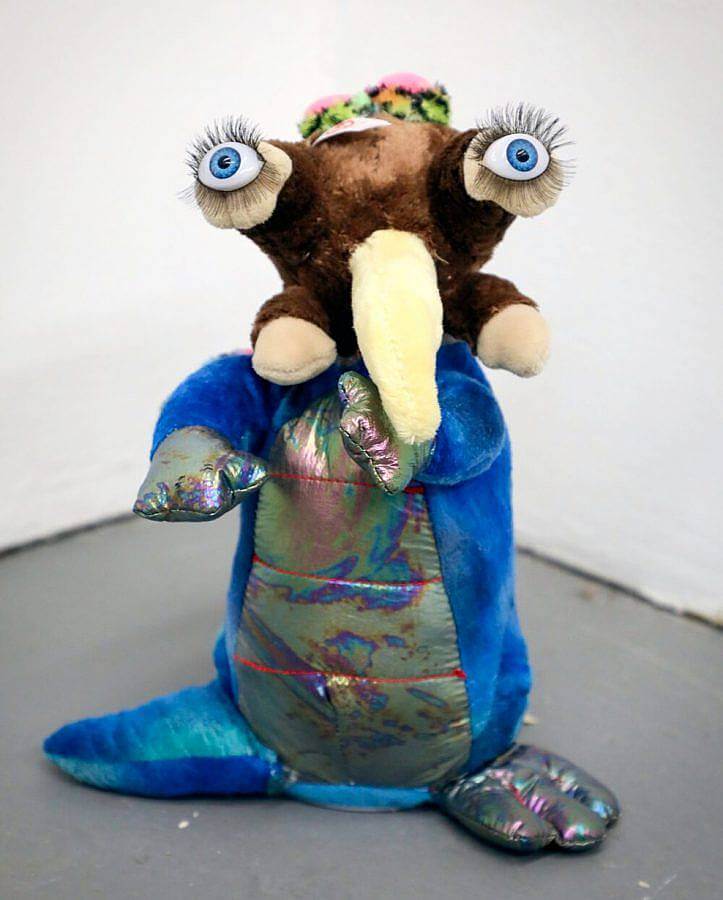
Can you talk a bit about your latest solo exhibition at Open Mind Art Space?
The show at Open Mind Art Space was actually my MFA show that was presented as one of two group exhibitions. So, it was myself along with half of my cohort. Due to COVID, we weren’t able to do a show on campus near the time of our graduation, so Alison Limtavemongkol who runs Open Mind Art Space kindly offered her space for us to do our show over the summer. I showed a larger painting called Popular Girl Crying in the Cafeteria and a life-size figurative sculpture called Prime Day that I had conceived of as a pair/installation. Alison’s gallery is a storefront style space on Santa Monica Boulevard in Los Angeles. My work was situated in front of the window which I loved because the mannequin based work is a bit about window shopping or shopping in general- I love the idea that a mannequin is an object/surface that is designed to sell you whatever is on top of it, in my case oil paint and assemblage. In my mind, the more traditional large oil painting on canvas in the background served to assert and remind the viewer that they were both paintings, or more so, two different versions of the same painting.
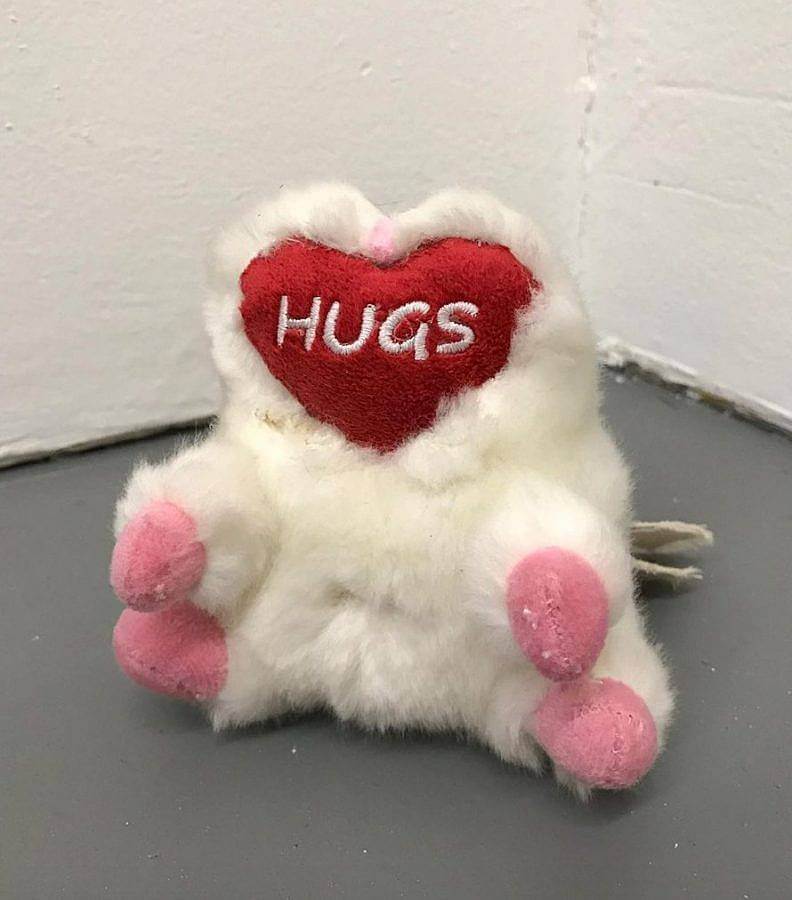
Some of your more recent works have taken the form of full size mannequins, how would you describe your consideration of scale when constructing these?
I get excited about the mannequin sculptures residing in a space in between sculpture and commercial objects because I think it’s funny to remember that fine art is grounded in a history of being luxury objects for sale. I do think the mannequin is the ultimate commercial object in that it is an object that is commercially available itself that solely exists to present and sell commercially available objects. The life size nature of it always reminded me of classical Greco Roman figurative sculpture in a fun way. Also, I realized right away that they scared people the same way a clown does because I think it starts to fall into an uncanny valley area. When people would walk into the studio for the first time they would jump and that was just too good not to follow a bit.
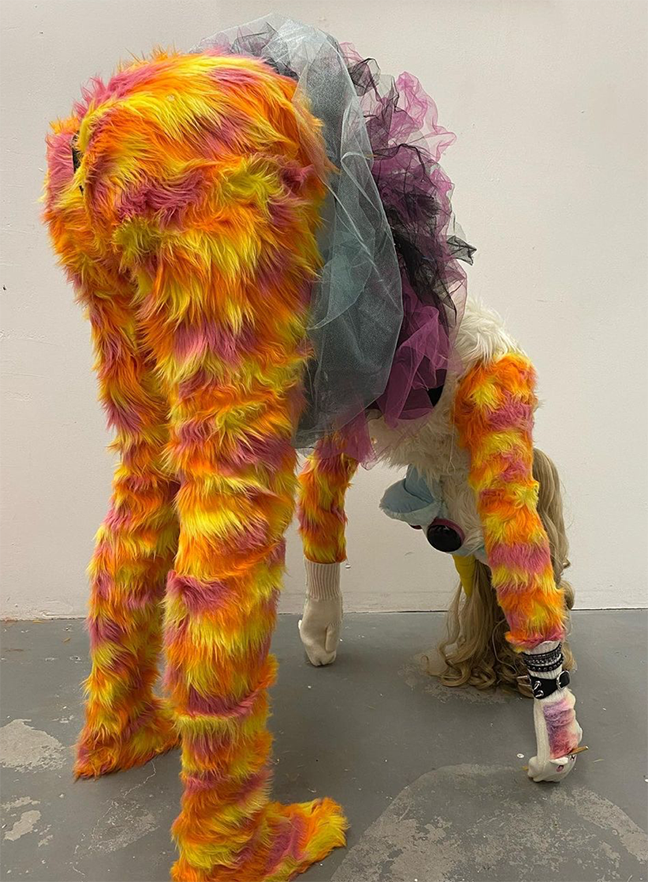
What is your current music rotation?
I just have one giant playlist of 2,492 songs in one giant playlist on Spotify that I listen to on shuffle. I know that is like the most disgusting thing ever to anyone who really appreciates music, but that is just how my brain works sadly. My recently added songs are Celebrity Skin by Hole, Trini Dem Girls by Nicki Minaj, and UCKERS by Shygirl. I crave really high energy fast tempo music with weird sounds and vocals and I love any song about being better than everyone or getting a lot of money or being unbelievably hot. I have pretty chronic depression, so I think that kind of positivity is like medicine for me. My fave genre is hyperpop and I mostly find music through just an endless web of hyperpop playlists on Spotify and YouTube. I accepted that I am simply no longer a cool girl at a record store listening to mumbly mopey albums the whole way through and my life is significantly easier and better for it. While I’m in the studio I actually almost exclusively listen to audiobooks because it can keep me going for longer eight or ten hour marathons and when I’m in a period of being in the studio a lot, I don’t have much time for reading. My recently listened to audiobooks are I Used to Be Charming by Eve Babitz, Peace is Every Step by Thich Nhat Hanh, and The Age of Surveillance Capitalism by Shoshanna Zuboff.
How would you describe the recurring imagery in your paintings?
Painting is such an exploratory thing for me and I think I am still learning a lot. The imagery that I use in the sculpture is kind of animal based, figurative, with lots of references to pop culture and fashion. But, it is definitely not a 1:1 between what works with a sculpture and what works with a painting. In the past, I was trying to get the same chaotic mixed emotions out of the paintings by using layered areas of black and saturated color, smooth gradients and smears, matte or shiny, flat or bumpy, realistic or fantastical. Recently, I’ve been interested in migrating those painting ideas directly onto the sculptures, so I’m going to try that for a bit.
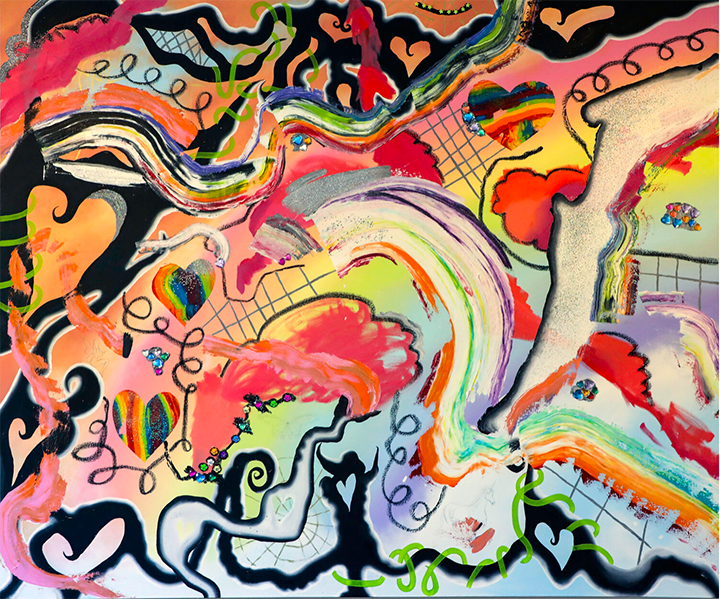
Would you consider the internet a source of inspiration for your work?
Definitely. I feel really lucky to have grown up alongside it. I grew up writing down questions I would think of throughout the day and then I would go to the computers in the library after school and type them all into Ask Jeeves. But, I actually didn’t actively use the internet or social media much at all until I moved to Los Angeles. I didn’t watch much television until then either, when I was already about 23. So, I had a lot of catching up to do popular culture wise. I think because I came to it all pretty late, nothing was normalized to me and it was all fresh. So, I just soaked it all up at once. I’ve always been a fan of marginal and counter cultural aesthetics and I’m so inspired by the way the internet acts as an archive for these niche aesthetics. I love that it isn’t a neat archive, like a traditional library system. It’s like this primordial soup or volcano that is always bubbling up and spitting out new combinations and permutations of information- Bubblegum Bitch, Bubblegum Witch, Cyberpop, Cyberpunk, etc. Aesthetics Wiki is an incredible place to start as a more traditional archive. I truly think this is kind of what art history and criticism will be like in the future. So, a lot of what I am doing is researching these “aesthetics” that are resonating for people and remixing them to create something that feels current and poignant but a bit harder to classify.
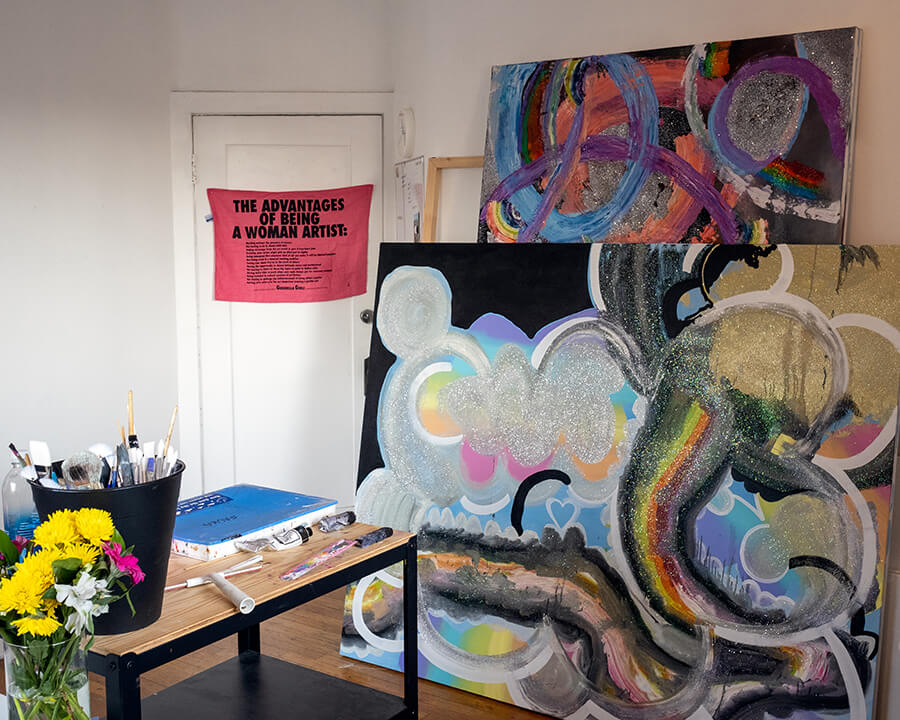
What does your studio look like?
I just moved into this studio at the beginning of September. It’s so dreamy, it’s crazy. It’s one room of what used to be rooms for rent in a large apartment, but was recently converted to artist studios. So, it looks pretty residential, like a big bedroom. It’s on the second floor of a building on Sunset Boulevard and has two windows- one looking out to Sunset and the mountains and one looking towards downtown. I can crawl out of the back window onto a roof where I can outdoors-y stuff like resin pours and spray paint and I’m going to get one of those rubbery hotel chaise lounges to nap on. I think I’m going to do some small rooftop studio sales once everything’s organized. My MFA studio was like a total junkyard covered in glitter. I’m going to try being one of those artists with, like, shelves and labels and see how that works out.

How do you approach movement when making your kinetic sculptures?
I try to approach it with a beginner’s mind. Shunryu Suzuki’s lectures in Zen Mind, Beginner’s Mind are very good. “In the beginner’s mind there are many possibilities, but in the expert’s mind there are few.” Ya! It is like the opposite of engineering. So much of my practice is centered around this extremely regressive form of play. I’m just sitting on the ground with these objects (mostly toys) and making all these really infantile gestures of knocking them over, turning them upside down, stacking them and I’m just trying to get a really well-rounded idea of what they can do. And what they can’t do. Failure and accidents are very good. I found this book from MIT Press really generative. My boyfriend skateboards and is always showing me these videos from the internet of guys falling down multiple sets of stairs or running into walls on skateboards and those movements and the documentation are really interesting to me. They are kind of funny, but not laugh-out-loud, kind of sickening, but not gruesome, kind of shocking, but predictable, a little sad, but not depressing. A lot of kinetic sculpture like the Calder mobiles or their derivatives seem to be about beautiful graceful movement, like dance. I’m going for something much more chaotic and perhaps a bit darker and I’m more inspired by falling, coughing, sneezing, twitching or seizing.
What do you have planned for the rest of 2021?
Recently I’ve had so much energy and a little bit of extra time, so I really just want to work, work, work. I just want to be in the studio as much as possible. I’ve accumulated a lot of materials over the past five or so years, so I want to challenge myself to use what I have instead of getting anything new for as long as possible. I think because I’m in a new space and have a bit more time it feels like anything is possible and is a welcome constraint. I’m working on getting a show together for my friend Caroline Eastburn’s new gallery, Galitarian. I want to create a big new body of work and see who is interested in it.
Interview conducted and composed by Sam Dybeck.
Studio photographs and portrait by John Gittens.
